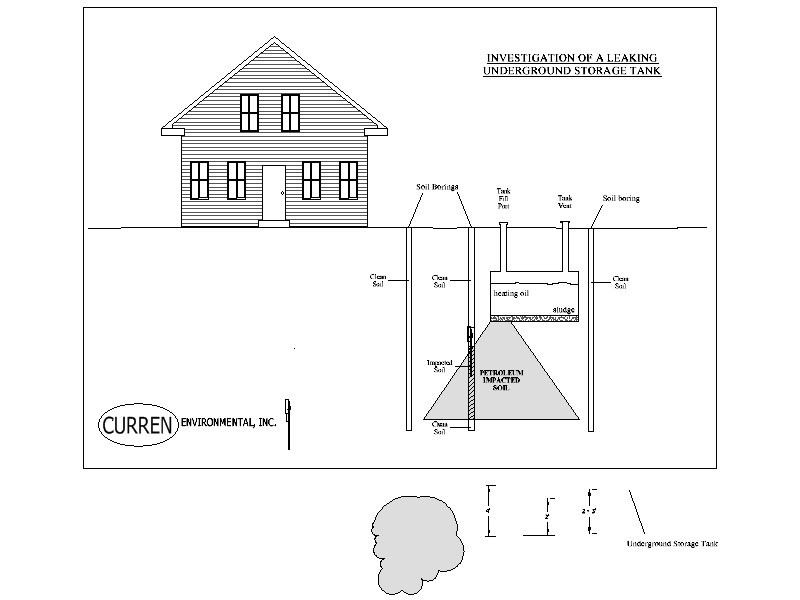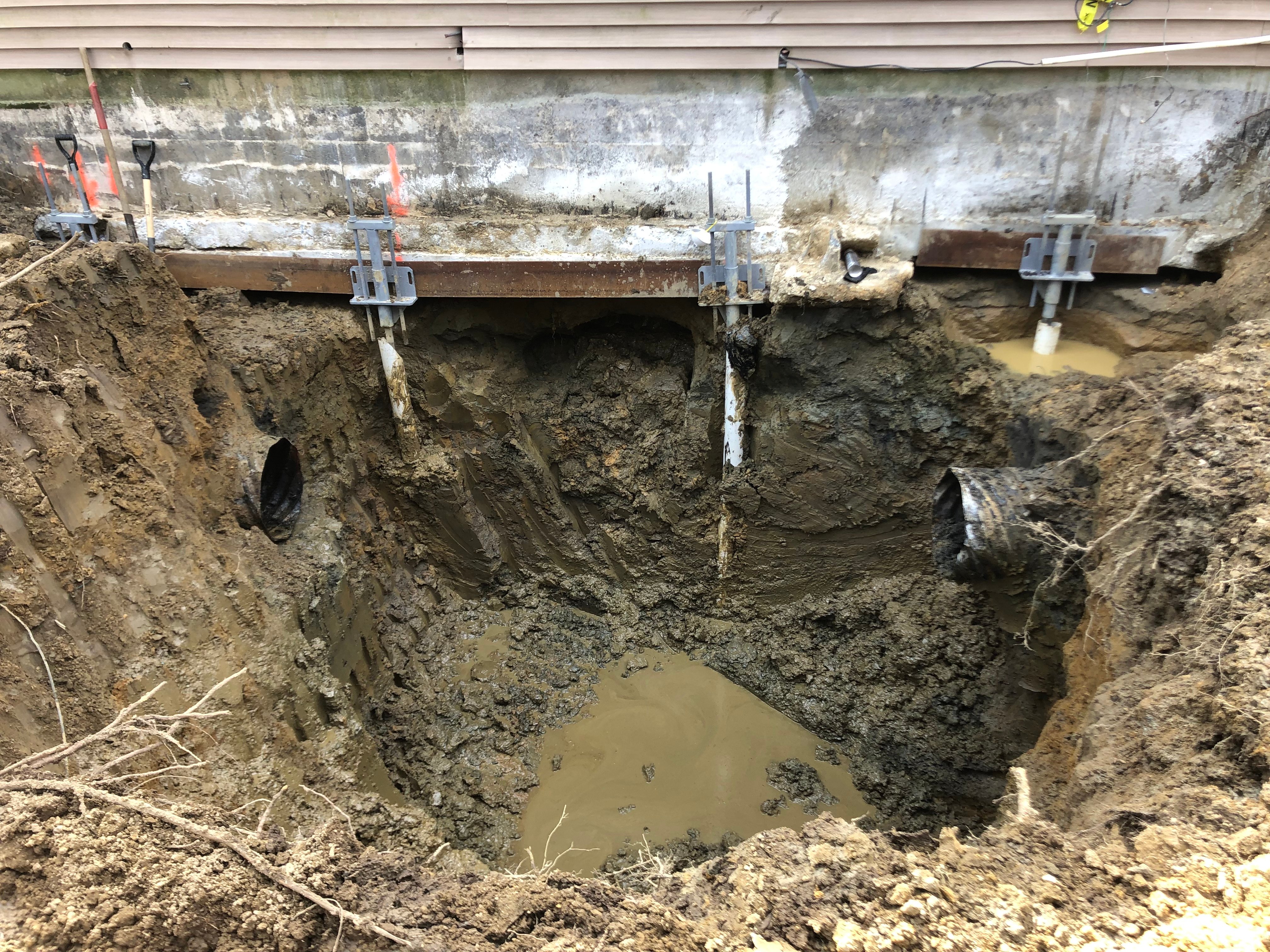Test the Oil Tank Before You buy the Property
Oil tanks don’t last forever BOTH Underground (UST) and Aboveground Storage Tanks (AST) can leak. AST's are easy to evaluate for leaks as you can visually assess for spilled or leaking oil.


Underground tanks, not so easy. There are two approaches to tank testing where as follows:
The first test is Volumetric or a computerized test where equipment is hooked up to the tank and the interior of the tank is evaluated for charges during a period of time. The idea is if the tank is not  being used (heater off) any changes inside the tank (loss of liquid) can be associated with a leak.
being used (heater off) any changes inside the tank (loss of liquid) can be associated with a leak.
The problem with this type of test is that there is a margin of error (good enough for government work).
Meaning tanks that are not leaking get flagged as leaking and vice versa. In addition, if a tank did leak where this tank was located and the current tank is a newer tank, well then you don’t detect the historic contamination from the old tank.
 The second and more telling test is to perform soil borings around the tank. This approach is what is performed on commercial tanks. The process entails drilling around the tank on three sides to a depth deeper than the burial depth of the tank. The soils extracted from each soil boring is evaluated for contamination aboveground utilizing a vapor meter. Simply put, if you find evidence of contamination at 4’ deep or 6’ deep, the tank leaked. No if ands or buts, when oil is found in the ground next to a tank, the tank leaked.
The second and more telling test is to perform soil borings around the tank. This approach is what is performed on commercial tanks. The process entails drilling around the tank on three sides to a depth deeper than the burial depth of the tank. The soils extracted from each soil boring is evaluated for contamination aboveground utilizing a vapor meter. Simply put, if you find evidence of contamination at 4’ deep or 6’ deep, the tank leaked. No if ands or buts, when oil is found in the ground next to a tank, the tank leaked.
What you can not do when conducting soil is assess directly under the tank (no you can’t drill vertically and sneak a sample from under the tank). You can’t drill between the house and the tank as there are small copper lines that take oil from the tank and feed the furnace inside the dwelling. You do not want to hit them and CAUSE an oil leak.
The real positive driver of performing soil borings is you get to evaluate the soils around an oil tank. Simply pu,t if you do three (3) soil borings and find no evidence of oil in any of the borings, that is a positive indicator. If you find oil in all three borings, well that is a real positive indicator that the tank is leaking, not just in one area but all around the tank, meaning a bigger problem.

Now there are all levels of competency when people perform tank testing via soil borings. As a buyer any money you spend to investigate a property is money out of pocket. This money is an investment if you ultimately buy the property. It is a loss if you don’t buy the dwelling so people lean toward skimping on investigation expenses, with the thought that price doesn’t matter and cheaper is better. Case in point, we had a client wanting to buy a property to investigate the tank they were looking at about a $1,000.00. Well they found someone that would do it for about $400.00. This is an exert from the report and why it is not reliable.
To investigate the inground oil tank for leaks, a technician extracted soil from areas around an underground storage tank for the purpose of determining if there has been a discharge of product. The soil sample(s) are collected and sent to a New Jersey certified laboratory to be analyzed for Extractable Petroleum Hydrocarbons (EPH). The technician extracted three (3) soil boring(s) from around the tank in accordance with the New Jersey Department of Environmental Protection (NJDEP) protocols for testing EPH. The soil sample(s) were extracted from depths of 72 to 80 inches and then transported to a lab for analysis. The soil sample was non detect for petroleum.
Sounds great right? Wrong. There was no map of where the soil samples were acquired and it turns out there were taken a little too far from the oil tank. There was no reference if the soil borings were evaluated for oil as the soil boring was advanced below ground. (apparently one sample had a hint of oil). The company to save money took some soil from each boring so they combined three samples into one sample. In essence diluting the sample. As a reference imagine if you had a blood sample from 3 people, now you combine the blood into one sample. Now you test that combined sample for cholesterol. How accurate is the data?
In short you are supposed to document where you take you soil samples.
You are supposed to check soils removed from a soil boring every 6” for evidence of petroleum with a vapor meter. You never combine soil from different locations into one sample, this composite sampling is not standard practice for any type of environmental investigation and can artificially biased the sample high or low.
In addition, the company used a $300.00 hand auger to obtain the soil samples. Unfortunately, a hand auger is driven by hand, so if the person using it can’t advance the soil boring deep enough, you are out of luck. You should use a powered drilling unit that costs about $65,000.00 (on the low end) so a buried rock or tree root won’t stop the boring.
I will cut to the chase, the tank was leaking, just not where they sampled (they sampled too far away and didn’t go deep enough). Company said the tank must have been leaking after their test. Just a big mess. Since the testing was not performed properly just cheaply. The buyer didn’t know what they were getting and the company doing the testing didn’t know what they were doing.

Want expert advice?
Curren is a company with tens of thousands of completed projects and we have been in business for over 20 years.
Give us a call we give a free initial consultation.

